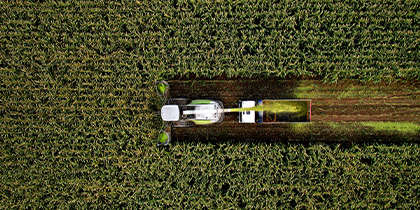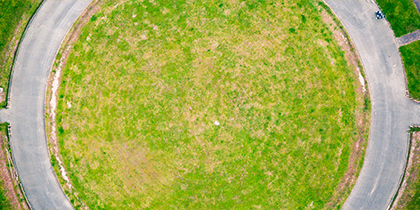The latest Circularity Gap Report shows that the world is only 6.9% circular.
In other words, 93.1% of all materials used are not reused or recycled. We call this the Circularity Gap: the gap between our current linear economy and the fully circular economy.
How has this gap developed in recent years? What do companies run into when doing circular business? What is the urgency to close the gap - and more importantly, how do you tackle this as an organization? You can read about it in this blog.
How has the Circularity Gap evolved over the years?
In 2018 , circularity was measured globally for the first time by Circle Economy-anorganization dedicated to the transition to a circular economy. This measurement looks at how much of all the materials we use actually comes back into the chain-for example, through reuse or recycling.
At the first measurement point in 2018, the Circularity Gap was 90.9%. Despite the sharp increase in attention to circularity, the figures show a different development. The gap has actually widened.
The figure below shows how the Circularity Gap has developed in recent years.
.jpg?width=676&height=507&name=infographic%20sjabloon%20Milgro%20(22).jpg)
The Circularity Gap is growing: what are the causes?
The growing gap between the current linear economy and the fully circular economy raises questions. How far along are companies when it comes to circularity? And what are they running into when taking concrete steps towards circular operations?
We investigated this among 500 Dutch and Belgian organizations. What emerged? In Belgium, only a third of the organizations are largely or fully circular. In the Netherlands that percentage is even lower: 23%.
A frequently mentioned barrier is the lack of clear legislation. 42% of companies expect that without stricter rules, the sector will never become truly circular. In addition, almost half (49%) feel that the government does too little to stimulate circular entrepreneurship. Remarkably, 41% even indicate that government policy hinders rather than promotes circularity.
Product design is also a challenge
This is evident from the Circularity Gap Report 2025. Many products are composed of different materials that are firmly attached to each other-for example, by gluing or coating. This makes them difficult to disassemble or separate after reuse.
A concrete example: solar panels
Solar panels consist of several layers, including solar cells that convert sunlight into electricity. Those solar cells are glued into a transparent layer that protects them from moisture and dirt. This is important for longevity, but makes it difficult to separate the materials after use - and thus to recycle them.
The glass of solar panels also poses a challenge. This is often coated to reduce reflection and increase efficiency. But that very extra layer disrupts the recycling process.
Components such as aluminum and glass are technically recyclable. Yet in practice they are often processed into low-grade material, such as insulation or building products. The original material then loses its function - a form of downcycling.
What is the urgency of the Circularity Gap?
The growing Circularity Gap makes the urgency to act circularly greater than ever. Globally, we see increasing pressure on resources due to economic growth, population growth and climate change. But geopolitical tensions and resource availability are also affecting this.
This year, Earth Overshoot Day falls on July 24 - the day when we have consumed more resources than the earth can renew in one year. That's eight days earlier than last year. As of this moment, we are living as if we have 1.7 Earths at our disposal.
The rate at which we consume natural resources and produce waste directly contributes to advancing Earth Overshoot Day. The less we reuse and the more we rely on new raw materials, the faster we exceed the earth's regenerative capacity.
By reducing the Circularity Gap - for example, by designing more sustainably and reusing raw materials - we can reduce the pressure on natural resources. And shift Earth Overshoot Day back toward December 31.
How can we close the gap?
Our recent Gap survey shows that companies are aware of the growing gap between today's linear economy and a fully circular economy-but that obstacles such as cost, lack of knowledge and limited technology stand in the way of their good intentions.
Although many organizations are behind on their circularity goals, 33% of companies do have the ambition to become more sustainable. Increasingly the question is being asked: how do you become truly circular as a company - and how can you contribute to closing the gap?
To give direction to this we have published the sequel to our recent Gap research: from circular ambition to action- 7 ways to close the gap. No abstract promises, but a concrete roadmap that you can apply immediately.
This will help your organization to:
- Gain insight into where you are as an organization;
- Take concrete, applicable steps-whether you're a starter or more advanced;
- Reduce waste through smarter design, sustainable procurement and better collaboration in the supply chain.
Stay informed
Want to stay up to date with the latest developments? Follow us on LinkedIn and Instagram or subscribe to our newsletter. Curious about what Milgro can do for your operations and waste process? Feel free to get in touch .
















